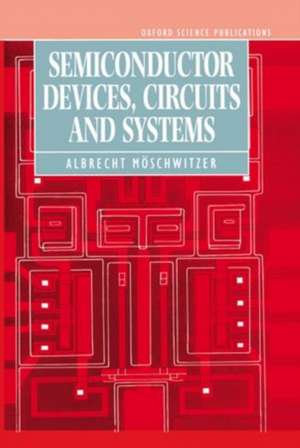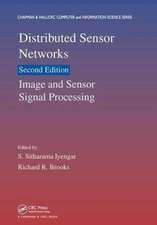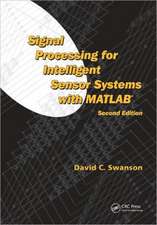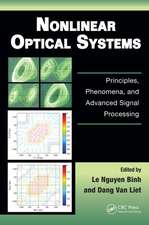Semiconductor Devices, Circuits, and Systems: Monographs in Electrical and Electronic Engineering, cartea 24
Autor Albrecht Möschwitzeren Limba Engleză Hardback – 15 aug 1991
Din seria Monographs in Electrical and Electronic Engineering
- 23%
 Preț: 270.09 lei
Preț: 270.09 lei - 34%
 Preț: 1840.84 lei
Preț: 1840.84 lei - 34%
 Preț: 484.61 lei
Preț: 484.61 lei - 34%
 Preț: 2837.63 lei
Preț: 2837.63 lei - 34%
 Preț: 701.13 lei
Preț: 701.13 lei - 34%
 Preț: 1096.91 lei
Preț: 1096.91 lei - 34%
 Preț: 816.99 lei
Preț: 816.99 lei - 34%
 Preț: 571.76 lei
Preț: 571.76 lei - 34%
 Preț: 579.88 lei
Preț: 579.88 lei - 34%
 Preț: 835.66 lei
Preț: 835.66 lei - 30%
 Preț: 1190.85 lei
Preț: 1190.85 lei - 34%
 Preț: 1167.71 lei
Preț: 1167.71 lei - 34%
 Preț: 861.80 lei
Preț: 861.80 lei - 34%
 Preț: 1036.42 lei
Preț: 1036.42 lei - 27%
 Preț: 1597.69 lei
Preț: 1597.69 lei - 34%
 Preț: 1502.66 lei
Preț: 1502.66 lei - 26%
 Preț: 181.45 lei
Preț: 181.45 lei - 31%
 Preț: 473.87 lei
Preț: 473.87 lei - 34%
 Preț: 2611.34 lei
Preț: 2611.34 lei - 34%
 Preț: 1345.34 lei
Preț: 1345.34 lei - 34%
 Preț: 1550.92 lei
Preț: 1550.92 lei
Preț: 225.86 lei
Preț vechi: 285.04 lei
-21% Nou
Puncte Express: 339
Preț estimativ în valută:
43.23€ • 46.98$ • 36.34£
43.23€ • 46.98$ • 36.34£
Carte tipărită la comandă
Livrare economică 09-15 aprilie
Preluare comenzi: 021 569.72.76
Specificații
ISBN-13: 9780198593744
ISBN-10: 0198593740
Pagini: 368
Ilustrații: numerous halftones, line illustrations and tables
Dimensiuni: 156 x 234 x 26 mm
Greutate: 0.73 kg
Editura: Clarendon Press
Colecția Clarendon Press
Seria Monographs in Electrical and Electronic Engineering
Locul publicării:Oxford, United Kingdom
ISBN-10: 0198593740
Pagini: 368
Ilustrații: numerous halftones, line illustrations and tables
Dimensiuni: 156 x 234 x 26 mm
Greutate: 0.73 kg
Editura: Clarendon Press
Colecția Clarendon Press
Seria Monographs in Electrical and Electronic Engineering
Locul publicării:Oxford, United Kingdom
Cuprins
Basic semiconductor structures; Bipolar transistors; Semiconductor circuits; VLSI systems; Physical design considerations.
Recenzii
'What the book does is to provide an overall view of a crucial part of the electronic engineering syllabus which will be valuable at both undergradute and postgraduate levels. It should be widely used, not only by those designing and manufacturing electronic systems but also by potential users, who must increasingly know what to ask for. Each of the five chapters is provided with exercises for the student, some of which are significant design problems in their own right. Anyone working their way through the complete sets of problems will emerge with a very full and detailed knowledge of the subject.'David Northrop, International Journal of Electrical Engineering Education, Volume 29, Number 4,














